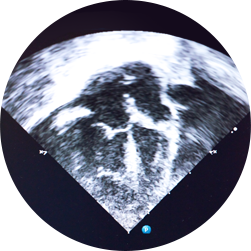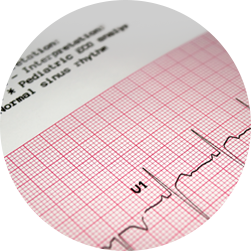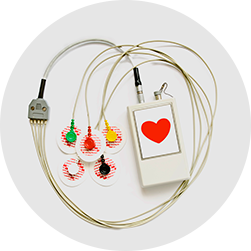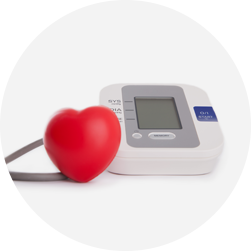Pediatric Cardiology
Edmonton Pediatrics and Heart Clinic is proud to have double board certified physician Dr. Praveen Kumar on staff. Dr. Kumar is a compassionate, experienced physician who provides excellent care to Edmonton’s young and littlest patients.

If your child is experiencing symptoms such as heart murmur, chest pain, dizziness or fainting, we can provide cardiovascular assessment taking into account the patient’s medical history, family history, current condition and physical examination.

Echocardiogram is basically an ultrasound of the heart. The procedure is completely painless and is usually completed in 30 to 45 minutes. The procedure requires placement of few stickers and application of a little bit of gel on the patient’s chest, upper abdomen and neck. The ultrasound probe captures pictures of the heart and blood vessels as it moves around the area, allowing the physician to examine the structure and function of the heart. Results of the echo will be discussed during your visit and a report will be sent to your referring physician.

An electrocardiogram is used to evaluate electrical activity in the patient’s heart by providing information on the heart’s rhythm and the size of the various heart chambers. An ECG requires placement of stickers on the patient’s chest, wrist and ankles but is completely painless. It takes only a few minutes for the technician to capture a recording of the heart rhythm.

A Holter monitor is a battery-operated portable device that measures and records heart rhythm continuously for 24 hours. The device is the size of a small camera or a pager. It has wires with small discs (electrodes) that attach to your chest. The regular ECG performed at the doctor’s office record heart activity at one point in time. However, abnormal heart rhythms and cardiac symptoms may come and go. Holter monitor helps to evaluate heart rhythm over a period of time. This is very helpful during symptoms of chest pain, palpitations, irregular heartbeats, dizziness or fainting. This monitor has no risks and wearing it isn’t painful. The electrodes are attached with tape or adhesives, they may cause mild skin irritation. You should let us know if your child has allergies to tapes and adhesive.
The monitor is carried in a pouch which can be attached to the waist. Avoid taking bathe, shower or swimming. Avoid electric blankets and stay away from high voltage area and magnets. It is important to keep an accurate diary of activities and symptoms which will be compared to the changes in the ECG recorded by the Holter monitor. Once the recording has been completed and the device is returned, the results are analyzed by our doctors.

There are risk factors, such as diabetes, hypertension, obesity and family history of early heart disease, that can lead to the development of premature coronary artery disease. Cardiovascular risk counseling provides information to the child and his or her caregivers that aids in reducing the risk of contracting such diseases or helps prepare the family to deal with them in the future. At-risk children and adolescents are screened for high cholesterol, lipids disorders, hypertension and hyperglycemia, any of which could adversely affect their cardiovascular system.

High blood pressure is one of the main risk factors in the development of cardiovascular disease in adults. These days, we are seeing more and more children and adolescents diagnosed with hypertension. At Edmonton Pediatric and Heart Clinic, we provide cardiovascular risk counselling aimed at prevention of high blood pressure, as well as comprehensive evaluation and management of pediatric hypertension after diagnosis.
Ambulatory blood pressure monitor is a portable blood pressure recording device which records readings in 24 hour period. A single reading at the doctor’s office may not be enough for confirming high, low or normal blood pressure. Your child will be wearing a light weight monitor which sits in a pouch held by a waist belt and appropriate arm cuff attached to it by a flexible rubber tube. The blood pressure is measured at regular intervals during the day and less often at night. Once the 24 hour period is over, the cuff and monitor are returned and recordings are analyzed.
